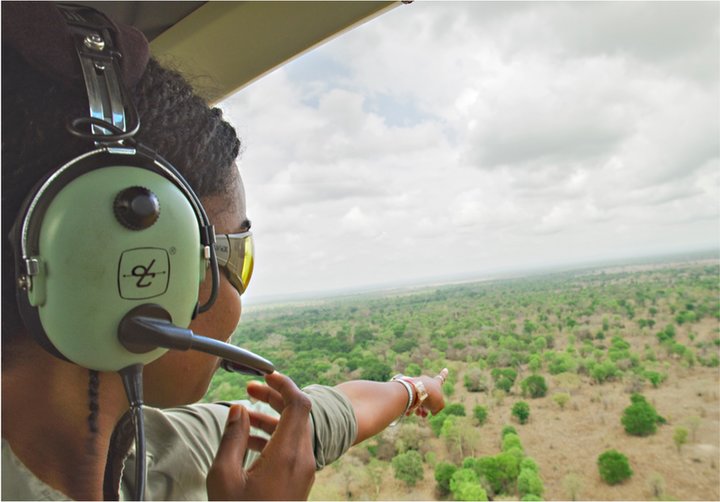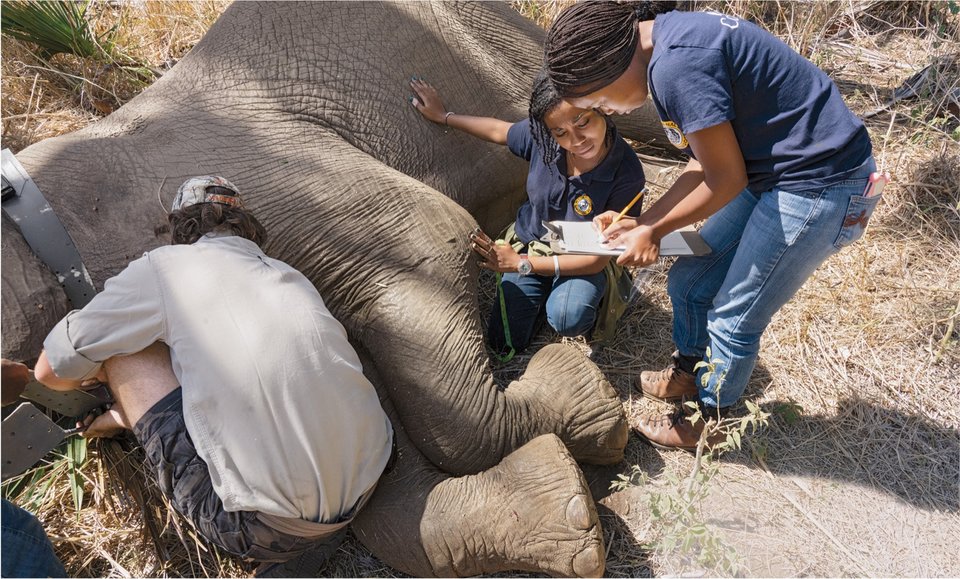HopingtoHelp
Gonçalvesandherteamcameuponamotherandherinjuredcalfoneday.Thecalfwaslimping.Itsleghadbeencaughtinasnare.Thewoundwasveryserious.Thebabyneededtreatment,oritwouldnotsurvive.Gonçalvescalledavetwhoflewinby helicopter.
Unfortunately,themothersawpeopleasthreats.Ashertensiongrew,shetoretreesfromtheground.Thenshewildlythrashedalarge stick.
Theteamcouldseethebaby,hiddeninthebrush.Theystayedinplaceforhours.Theyhopedthatthemotherwouldletthemapproach.Instead,sheboltedintothebrushwithher baby.
Fourdayslater,themotherwasspotted.Shewasalone.Gonçalvesknewthebabyhadnotsurvived.Shewasstruckbyhowfiercelythemotherhadfoughttoprotecther.Itwasmuchlikeahuman mother.

Thematriarchleads,buteveryoneintheherdlooksoutforone another.

Amatriarchmightleadherfamilytotheforestinthemorningorleadthemtowaterinthe afternoon.
RoomtoRoam
Today,therearemorethan650 elephantslivinginGorongosa.Theyoncehadfreerangeofthepark.Now,thissmallerpopulationstaysinthesouthernpartonly.Astheherdsgrow,Gonçalveswonderswhichareastheywillchoosetolive in.
Elephantsneedroomtoroam.Amatriarchmightleadherherd10 kilometers(6.2miles)aday.Astheysearchforfoodandwater,shemighttakethemthroughavillagetosnackoncropswhilethevillagers sleep!
BigTrouble
Asfearfulastheelephantsareofpeople,peoplefeartheelephants,too.Andnoonewantsanunpredictableelephantdestroyingtheir crops!
Gonçalves’sgoalisforpeopleandelephantstopeacefullycoexist.Avoidingconflictsisimportant!So,akeypartofherjobistokeeptrackofwheretheelephantstravel.Shemustcollarandtracktheir movements.
Collaringanelephantisashardasitsounds.First,youhavetofindanelephant.Thesearchoftenhappensbyhelicopter.Whentherightelephantisfound,ateamgoesinto action.

Gonçalvessearchesforelephantsby helicopter.
GettingaSignal
Theteamfiresatranquilizerdart.Thismakestheelephantsleepy.Onceit’sasleep,theteamcanland.“Theeventshappenquickly,”Gonçalvessays.“Everyonehasa role.”
Somemembersoftheteamtakemeasurementsandsamplesoftheelephant.Othershelpfitthecollararoundtheelephant’sneck.Thentheywaitfortheelephanttowakeupandgetbackonher feet.
Theteamwillreceivedatafromthecollareveryhour,foraslongastwoyears.With10elephantscollared,theteammonitorseverywherethey go.
atranquilizer dart


Gonçalvesandtheteamtakesamplesfromamatriarchwhiletheycollar her.